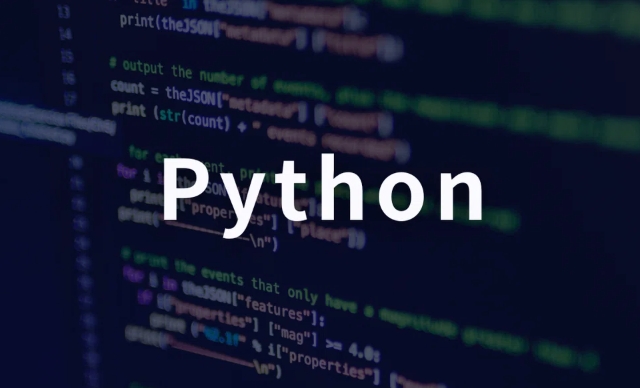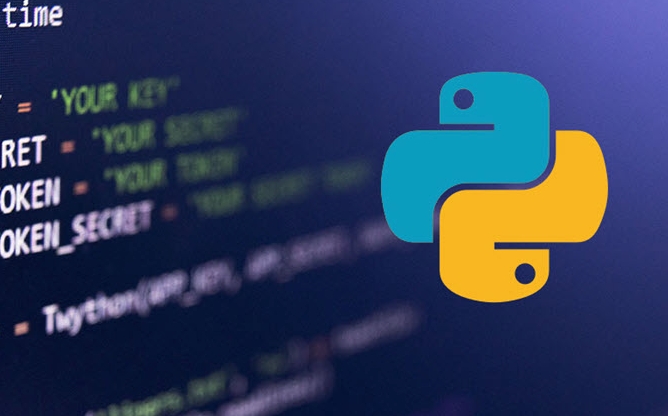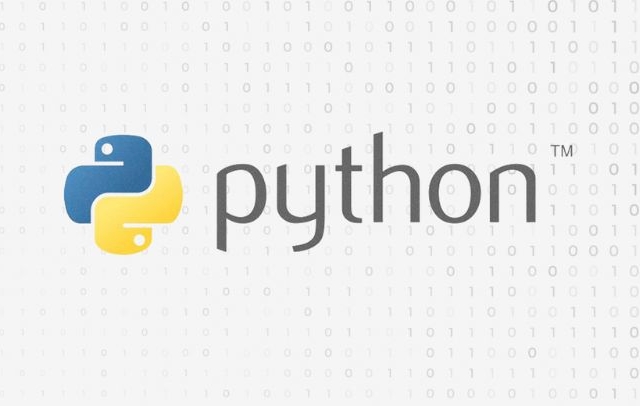In Python, instances are concrete implementations of classes. 1. Creating an instance refers to generating an independent object with its own data and can use class to define behavior; 2. Use the isinstance() function to check whether the object is an instance of a specific class; 3. Each instance has its own attribute value, such as name, age, etc.; 4. An instance allows you to manage multiple independent entities with the same structure, which helps code organization and reuse; 5. Operate instance data through instance methods, use specific instances when calling, and reference the current instance through self parameters within the method.

A Python instance is essentially a specific realization of a class. When you create an object from a class in Python, that object is called an instance of the class.

What Does It Mean to Create an Instance?
Creating an instance means making a unique copy of a class that has its own data and can use the behaviors (methods) defined in the class. Think of a class as a blueprint for a house — it defines how things should be structured. An instance is like the actual house built from that blueprint — it's real and contains actual data.

For example:
class Dog:
def __init__(self, name):
self.name = name
my_dog = Dog("Buddy") In this case, my_dog is an instance of the Dog class. The name "Buddy" is specific to this instance.

How Do You Recognize an Instance?
You can check if something is an instance of a particular class using the isinstance() function. This is handy when you're working with different types or want to ensure a variable fits what you expect.
Example:
print(isinstance(my_dog, Dog)) # Outputs: True
- If you define multiple dogs (
dog1,dog2, etc.), each one will be its own instance. - Each instance stores its own values ??for attributes like
name,age, or any other properties you define.
This allows you to work with similar objects independently — your dog might be named Buddha, while another person's dog could be named Max, and both live in their own instances without interfering.
Why Are Instances Important?
Instances are key to object-oriented programming because they let you manage many separate entities based on the same structure. Some practical uses include:
- Representing users in a system (each user has a name, email, password, etc.)
- Modeling items in a game (each enemy, weapon, or character is a separate instance)
- Managing database records (each row becomes an object with readable and editable fields)
They help keep code organized and reusable.
Also, each instance can have its own state — meaning two instances of the same class can behave differently depending on the data they hold.
How Do You Work With Instance Methods?
Once you have an instance, you can call methods on it — these are functions defined inside the class that usually do something related to the instance itself.
Example:
class Dog:
def __init__(self, name):
self.name = name
def bark(self):
print(f"{self.name} says woof!")
my_dog = Dog("Buddy")
my_dog.bark() # Output: Buddha says woof! Here, .bark() is an instance method — it only works when called on an actual instance like my_dog . Inside the method, you use self to refer to the current instance.
Some tips:
- Always include
selfas the first parameter in instance methods - Use describe names for methods so it's clear what they do
- You can chain method calls if needed, especially when designing fluent interfaces
Basically that's it.
The above is the detailed content of What is a python instance. For more information, please follow other related articles on the PHP Chinese website!

Hot AI Tools

Undress AI Tool
Undress images for free

Undresser.AI Undress
AI-powered app for creating realistic nude photos

AI Clothes Remover
Online AI tool for removing clothes from photos.

Clothoff.io
AI clothes remover

Video Face Swap
Swap faces in any video effortlessly with our completely free AI face swap tool!

Hot Article

Hot Tools

Notepad++7.3.1
Easy-to-use and free code editor

SublimeText3 Chinese version
Chinese version, very easy to use

Zend Studio 13.0.1
Powerful PHP integrated development environment

Dreamweaver CS6
Visual web development tools

SublimeText3 Mac version
God-level code editing software (SublimeText3)
 Polymorphism in python classes
Jul 05, 2025 am 02:58 AM
Polymorphism in python classes
Jul 05, 2025 am 02:58 AM
Polymorphism is a core concept in Python object-oriented programming, referring to "one interface, multiple implementations", allowing for unified processing of different types of objects. 1. Polymorphism is implemented through method rewriting. Subclasses can redefine parent class methods. For example, the spoke() method of Animal class has different implementations in Dog and Cat subclasses. 2. The practical uses of polymorphism include simplifying the code structure and enhancing scalability, such as calling the draw() method uniformly in the graphical drawing program, or handling the common behavior of different characters in game development. 3. Python implementation polymorphism needs to satisfy: the parent class defines a method, and the child class overrides the method, but does not require inheritance of the same parent class. As long as the object implements the same method, this is called the "duck type". 4. Things to note include the maintenance
 Explain Python generators and iterators.
Jul 05, 2025 am 02:55 AM
Explain Python generators and iterators.
Jul 05, 2025 am 02:55 AM
Iterators are objects that implement __iter__() and __next__() methods. The generator is a simplified version of iterators, which automatically implement these methods through the yield keyword. 1. The iterator returns an element every time he calls next() and throws a StopIteration exception when there are no more elements. 2. The generator uses function definition to generate data on demand, saving memory and supporting infinite sequences. 3. Use iterators when processing existing sets, use a generator when dynamically generating big data or lazy evaluation, such as loading line by line when reading large files. Note: Iterable objects such as lists are not iterators. They need to be recreated after the iterator reaches its end, and the generator can only traverse it once.
 How to handle API authentication in Python
Jul 13, 2025 am 02:22 AM
How to handle API authentication in Python
Jul 13, 2025 am 02:22 AM
The key to dealing with API authentication is to understand and use the authentication method correctly. 1. APIKey is the simplest authentication method, usually placed in the request header or URL parameters; 2. BasicAuth uses username and password for Base64 encoding transmission, which is suitable for internal systems; 3. OAuth2 needs to obtain the token first through client_id and client_secret, and then bring the BearerToken in the request header; 4. In order to deal with the token expiration, the token management class can be encapsulated and automatically refreshed the token; in short, selecting the appropriate method according to the document and safely storing the key information is the key.
 Explain Python assertions.
Jul 07, 2025 am 12:14 AM
Explain Python assertions.
Jul 07, 2025 am 12:14 AM
Assert is an assertion tool used in Python for debugging, and throws an AssertionError when the condition is not met. Its syntax is assert condition plus optional error information, which is suitable for internal logic verification such as parameter checking, status confirmation, etc., but cannot be used for security or user input checking, and should be used in conjunction with clear prompt information. It is only available for auxiliary debugging in the development stage rather than substituting exception handling.
 How to iterate over two lists at once Python
Jul 09, 2025 am 01:13 AM
How to iterate over two lists at once Python
Jul 09, 2025 am 01:13 AM
A common method to traverse two lists simultaneously in Python is to use the zip() function, which will pair multiple lists in order and be the shortest; if the list length is inconsistent, you can use itertools.zip_longest() to be the longest and fill in the missing values; combined with enumerate(), you can get the index at the same time. 1.zip() is concise and practical, suitable for paired data iteration; 2.zip_longest() can fill in the default value when dealing with inconsistent lengths; 3.enumerate(zip()) can obtain indexes during traversal, meeting the needs of a variety of complex scenarios.
 What are python iterators?
Jul 08, 2025 am 02:56 AM
What are python iterators?
Jul 08, 2025 am 02:56 AM
InPython,iteratorsareobjectsthatallowloopingthroughcollectionsbyimplementing__iter__()and__next__().1)Iteratorsworkviatheiteratorprotocol,using__iter__()toreturntheiteratorand__next__()toretrievethenextitemuntilStopIterationisraised.2)Aniterable(like
 What are Python type hints?
Jul 07, 2025 am 02:55 AM
What are Python type hints?
Jul 07, 2025 am 02:55 AM
TypehintsinPythonsolvetheproblemofambiguityandpotentialbugsindynamicallytypedcodebyallowingdeveloperstospecifyexpectedtypes.Theyenhancereadability,enableearlybugdetection,andimprovetoolingsupport.Typehintsareaddedusingacolon(:)forvariablesandparamete
 Python FastAPI tutorial
Jul 12, 2025 am 02:42 AM
Python FastAPI tutorial
Jul 12, 2025 am 02:42 AM
To create modern and efficient APIs using Python, FastAPI is recommended; it is based on standard Python type prompts and can automatically generate documents, with excellent performance. After installing FastAPI and ASGI server uvicorn, you can write interface code. By defining routes, writing processing functions, and returning data, APIs can be quickly built. FastAPI supports a variety of HTTP methods and provides automatically generated SwaggerUI and ReDoc documentation systems. URL parameters can be captured through path definition, while query parameters can be implemented by setting default values ??for function parameters. The rational use of Pydantic models can help improve development efficiency and accuracy.






